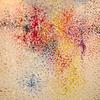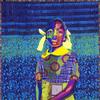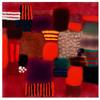30,000 year-old figurine scanned and printed in 3D for Brussels museum exhibition
- OXFORD, UK AND BRUSSELS, Belgium
- /
- September 11, 2015
Fuel3D, a developer of customized 3D imaging solutions, announced today that its SCANIFY 3D scanner has been used to recreate an ancient statue for a unique exhibition at the Royal Museum of Fine Arts of Belgium.
In collaboration with the Louvre Museum, the Royal Museum of Fine Arts of Belgium is currently hosting an exhibition entitled “2050 – a brief history of the future”. As part of this exhibition, the museum wanted to exhibit a 3D-printed replica of the Venus of Galgenberg and worked with Fuel3D and Belgian 3D printing firm, Trideus to make this a reality.
The Venus of Galgenberg, one of the world’s oldest figurines, is dated around 30,000 B.C. and is permanently housed at the Museum of Natural History in Vienna. The concept of recreating a 3D-printed copy of the Venus for the exhibition in Brussels was designed to show how technology might change the way that people experience art in the future.
The SCANIFY handheld 3D scanner was used to capture several images of the Venus at its home in Vienna. These images were then combined in Fuel3D Studio software to create a full 3D model of the Venus in high-resolution shape and colour.
The 3D model files were then provided to Trideus who prepared the replica Venus for 3D printing. The Venus was printed in full color using sandstone printing technology, which works by printing binder material and colored ink layer-by-layer into a bed of gypsum-based powder.
“We are delighted with this part of our exhibition, which truly shows the potential of technologies like 3D printing and scanning,” said Jennifer Beauloye, curator of the exhibition 2050. A Brief History of the Future, Royal Museum of Fine Arts of Belgium. “It has been a pleasure to work with Fuel3D and Trideus on this project. With this, we hope to initiate a reflection and to open a debate on the evolution of the museum in the digital era.”
SCANIFY is a handheld, point-and-shoot 3D scanner, designed to capture high-resolution, color 3D models of objects in in under 0.1 seconds. SCANIFY is designed for use across a range of 3D applications, including 3D printing and personalization, as well as on-screen applications like 3D art and animation.
“This was a wonderful project to be part of,” said Stuart Mead, CEO, Fuel3D. “We developed SCANIFY to help bring the potential of 3D to a wider audience and this application is a perfect example of how it is doing that.”
“We have enjoyed the challenge set us by the Royal Museum,” said Jesse Buteneers, CEO of Trideus. “By bringing together some of the best technologies in 3D scanning and printing, we have been able to achieve something very special.”
About the Venus of Galgenberg
The Venus was discovered in 1988 during the excavation of a habitation of Palaeolithic hunters at Galgenberg near Stratzing in Austria, broken into several pieces. The Venus is a 7.2 cm high figurine of a woman weighing 10 g and made of greenish, amphibolite slate. The upper body is turned to the side, in a dancing position, with a three-dimensional front and a flat back. The figurine is believed to have had cultic or religious significance.
About Trideus
Trideus is a reseller and distributor of 3D printers, 3D scanners and all other 3D printing equipment’s and solutions. It has a unique combination of a webshop and a showroom, which people can visit on appointment to discover the 3D printing world and get the appropriate guidance and information depending on the customer’s needs. Trideus’ great range of 3D printers, 3D scanners and accessories allows the company to offer specialized printers for specific needs. This way, Trideus tries to bring 3D printing to everybody. www.trideus.be
About Fuel3D
Fuel3D is a developer of advanced 3D scanning systems and solutions. Originally developed for the medical imaging sector, the Fuel3D technology has been adapted for the broader 3D market, with the goal of bringing the benefits of point-and-shoot 3D imaging to consumers, professionals and businesses. Since generating worldwide attention through a successful crowdfunding campaign which was ranked in the top 0.5% of Kickstarter campaigns in 2013 by revenue, the company has gone on to raise millions in private investment and sign retail and distribution partners across the world.
Based on technology developed by Professor Ron Daniel, Lecturer in Engineering Science at Oxford University, Fuel3D is today led by Stuart Mead, CEO, a veteran of several successful global technology ventures, and supported by an expert team of hardware and software engineers and scientists. For more information, visit www.fuel-3D.com














100x100_c.jpg)
